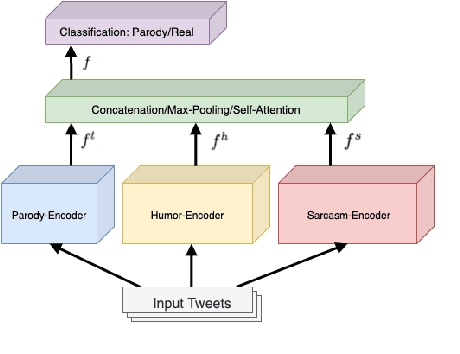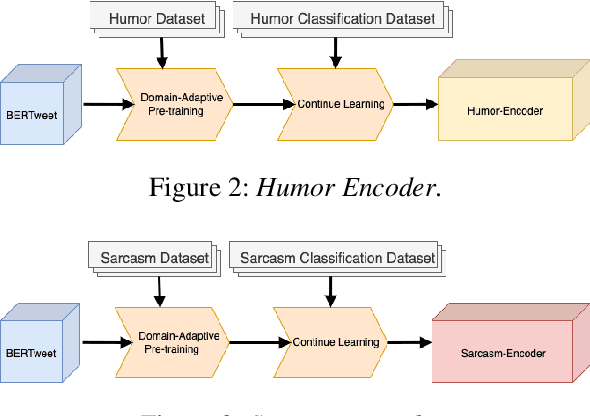Daniel Preoţiuc-Pietro
An Alternative to FLOPS Regularization to Effectively Productionize SPLADE-Doc
May 21, 2025Abstract:Learned Sparse Retrieval (LSR) models encode text as weighted term vectors, which need to be sparse to leverage inverted index structures during retrieval. SPLADE, the most popular LSR model, uses FLOPS regularization to encourage vector sparsity during training. However, FLOPS regularization does not ensure sparsity among terms - only within a given query or document. Terms with very high Document Frequencies (DFs) substantially increase latency in production retrieval engines, such as Apache Solr, due to their lengthy posting lists. To address the issue of high DFs, we present a new variant of FLOPS regularization: DF-FLOPS. This new regularization technique penalizes the usage of high-DF terms, thereby shortening posting lists and reducing retrieval latency. Unlike other inference-time sparsification methods, such as stopword removal, DF-FLOPS regularization allows for the selective inclusion of high-frequency terms in cases where the terms are truly salient. We find that DF-FLOPS successfully reduces the prevalence of high-DF terms and lowers retrieval latency (around 10x faster) in a production-grade engine while maintaining effectiveness both in-domain (only a 2.2-point drop in MRR@10) and cross-domain (improved performance in 12 out of 13 tasks on which we tested). With retrieval latencies on par with BM25, this work provides an important step towards making LSR practical for deployment in production-grade search engines.
Improving Instruct Models for Free: A Study on Partial Adaptation
Apr 15, 2025Abstract:Instruct models, obtained from various instruction tuning or post-training steps, are commonly deemed superior and more usable than their base counterpart. While the model gains instruction following ability, instruction tuning may lead to forgetting the knowledge from pre-training or it may encourage the model being overly conversational or verbose. This, in turn, can lead to degradation of in-context few-shot learning performance. In this work, we study the performance trajectory between base and instruct models by scaling down the strength of instruction-tuning via the partial adaption method. We show that, across several model families and model sizes, reducing the strength of instruction-tuning results in material improvement on a few-shot in-context learning benchmark covering a variety of classic natural language tasks. This comes at the cost of losing some degree of instruction following ability as measured by AlpacaEval. Our study shines light on the potential trade-off between in-context learning and instruction following abilities that is worth considering in practice.
Who is bragging more online? A large scale analysis of bragging in social media
Mar 25, 2024



Abstract:Bragging is the act of uttering statements that are likely to be positively viewed by others and it is extensively employed in human communication with the aim to build a positive self-image of oneself. Social media is a natural platform for users to employ bragging in order to gain admiration, respect, attention and followers from their audiences. Yet, little is known about the scale of bragging online and its characteristics. This paper employs computational sociolinguistics methods to conduct the first large scale study of bragging behavior on Twitter (U.S.) by focusing on its overall prevalence, temporal dynamics and impact of demographic factors. Our study shows that the prevalence of bragging decreases over time within the same population of users. In addition, younger, more educated and popular users in the U.S. are more likely to brag. Finally, we conduct an extensive linguistics analysis to unveil specific bragging themes associated with different user traits.
Improving Multimodal Classification of Social Media Posts by Leveraging Image-Text Auxiliary tasks
Sep 14, 2023Abstract:Effectively leveraging multimodal information from social media posts is essential to various downstream tasks such as sentiment analysis, sarcasm detection and hate speech classification. However, combining text and image information is challenging because of the idiosyncratic cross-modal semantics with hidden or complementary information present in matching image-text pairs. In this work, we aim to directly model this by proposing the use of two auxiliary losses jointly with the main task when fine-tuning any pre-trained multimodal model. Image-Text Contrastive (ITC) brings image-text representations of a post closer together and separates them from different posts, capturing underlying dependencies. Image-Text Matching (ITM) facilitates the understanding of semantic correspondence between images and text by penalizing unrelated pairs. We combine these objectives with five multimodal models, demonstrating consistent improvements across four popular social media datasets. Furthermore, through detailed analysis, we shed light on the specific scenarios and cases where each auxiliary task proves to be most effective.
Combining Humor and Sarcasm for Improving Political Parody Detection
May 06, 2022



Abstract:Parody is a figurative device used for mimicking entities for comedic or critical purposes. Parody is intentionally humorous and often involves sarcasm. This paper explores jointly modelling these figurative tropes with the goal of improving performance of political parody detection in tweets. To this end, we present a multi-encoder model that combines three parallel encoders to enrich parody-specific representations with humor and sarcasm information. Experiments on a publicly available data set of political parody tweets demonstrate that our approach outperforms previous state-of-the-art methods.
Automatic Identification and Classification of Bragging in Social Media
Mar 11, 2022



Abstract:Bragging is a speech act employed with the goal of constructing a favorable self-image through positive statements about oneself. It is widespread in daily communication and especially popular in social media, where users aim to build a positive image of their persona directly or indirectly. In this paper, we present the first large scale study of bragging in computational linguistics, building on previous research in linguistics and pragmatics. To facilitate this, we introduce a new publicly available data set of tweets annotated for bragging and their types. We empirically evaluate different transformer-based models injected with linguistic information in (a) binary bragging classification, i.e., if tweets contain bragging statements or not; and (b) multi-class bragging type prediction including not bragging. Our results show that our models can predict bragging with macro F1 up to 72.42 and 35.95 in the binary and multi-class classification tasks respectively. Finally, we present an extensive linguistic and error analysis of bragging prediction to guide future research on this topic.
Point-of-Interest Type Inference from Social Media Text
Oct 02, 2020



Abstract:Physical places help shape how we perceive the experiences we have there. For the first time, we study the relationship between social media text and the type of the place from where it was posted, whether a park, restaurant, or someplace else. To facilitate this, we introduce a novel data set of $\sim$200,000 English tweets published from 2,761 different points-of-interest in the U.S., enriched with place type information. We train classifiers to predict the type of the location a tweet was sent from that reach a macro F1 of 43.67 across eight classes and uncover the linguistic markers associated with each type of place. The ability to predict semantic place information from a tweet has applications in recommendation systems, personalization services and cultural geography.
Multi-task Pairwise Neural Ranking for Hashtag Segmentation
Jun 13, 2019



Abstract:Hashtags are often employed on social media and beyond to add metadata to a textual utterance with the goal of increasing discoverability, aiding search, or providing additional semantics. However, the semantic content of hashtags is not straightforward to infer as these represent ad-hoc conventions which frequently include multiple words joined together and can include abbreviations and unorthodox spellings. We build a dataset of 12,594 hashtags split into individual segments and propose a set of approaches for hashtag segmentation by framing it as a pairwise ranking problem between candidate segmentations. Our novel neural approaches demonstrate 24.6% error reduction in hashtag segmentation accuracy compared to the current state-of-the-art method. Finally, we demonstrate that a deeper understanding of hashtag semantics obtained through segmentation is useful for downstream applications such as sentiment analysis, for which we achieved a 2.6% increase in average recall on the SemEval 2017 sentiment analysis dataset.
 Add to Chrome
Add to Chrome Add to Firefox
Add to Firefox Add to Edge
Add to Edge